RECORDANDO A LOS INOLVIDABLES PERSONAJES DE HANNA-BARBERA
REMEMBERING THE UNFORGETTABLE CHARACTERS OF HANNA-BARBERA
THIS IS WHY OUR COUNTRY BECAUSE NO PROGRESS IS FULL OF NEGATIVE PEOPLE THAT ONLY THERE FOR HARM AND DESTROY ALL AROUND THERE GOOD, EVIL JUST LIVE IN YOUR SOUL POISON.
Hanna-Barbera
Hanna-Barbera Productions, Inc. fue un estudio de animación estadounidense. La compañía fue fundada en 1957 por los directores de Metro-Goldwyn-Mayer, William Hanna y Joseph Barbera, como H-B Enterprises, con la cual se dedicaron a la producción de comerciales de televisión. Después de que MGM cerrara su estudio de animación en 1957, H-B Enterprises se convirtió en el trabajo de tiempo completo de Hanna y Barbera. Ambos comenzaron a producir dibujos animados como The Ruff & Reddy Show y The Huckleberry Hound Show. Para los años 1960, ahora llamada Hanna-Barbera Productions, la compañía se había convertido en la productora líder de animación.
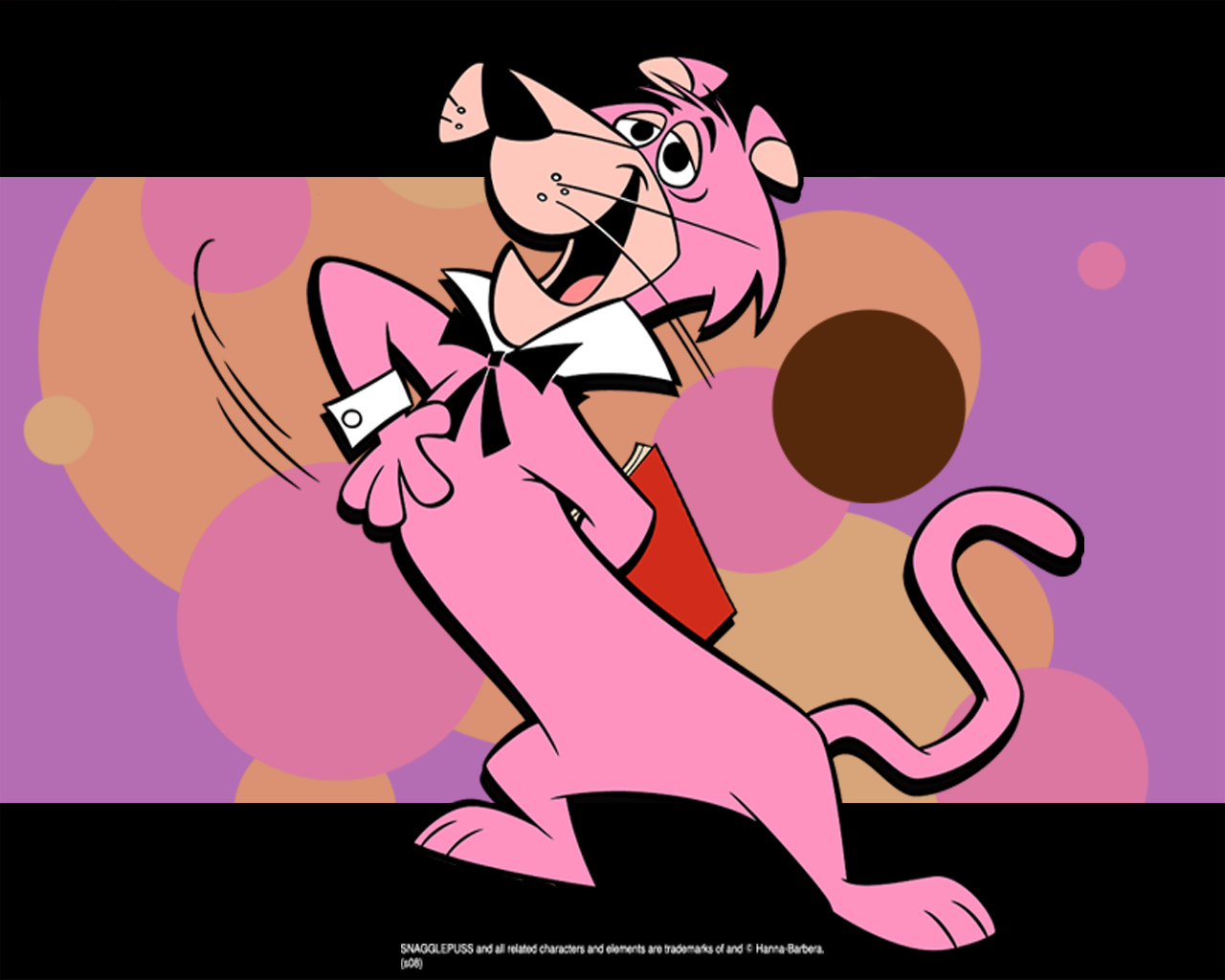
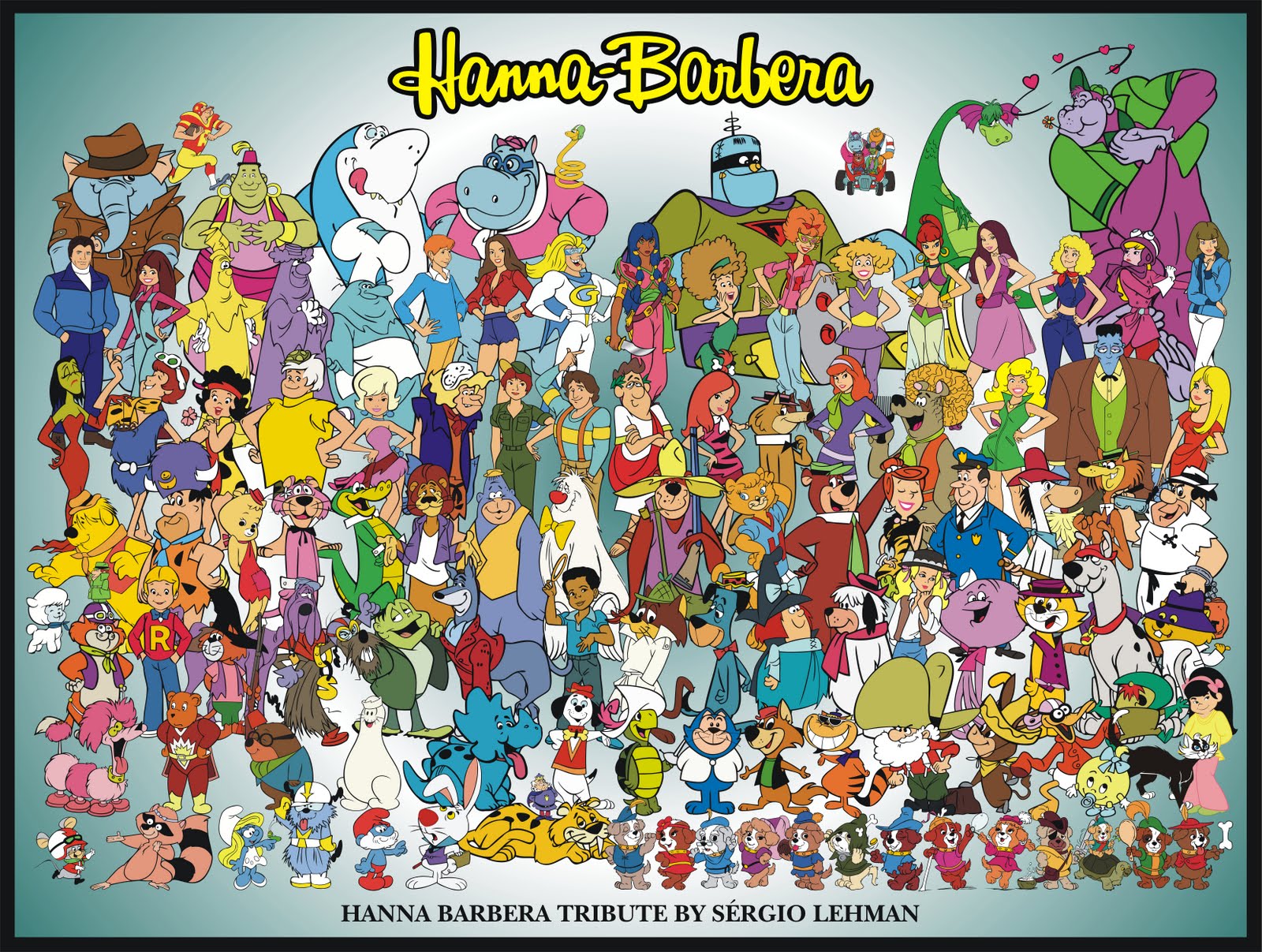
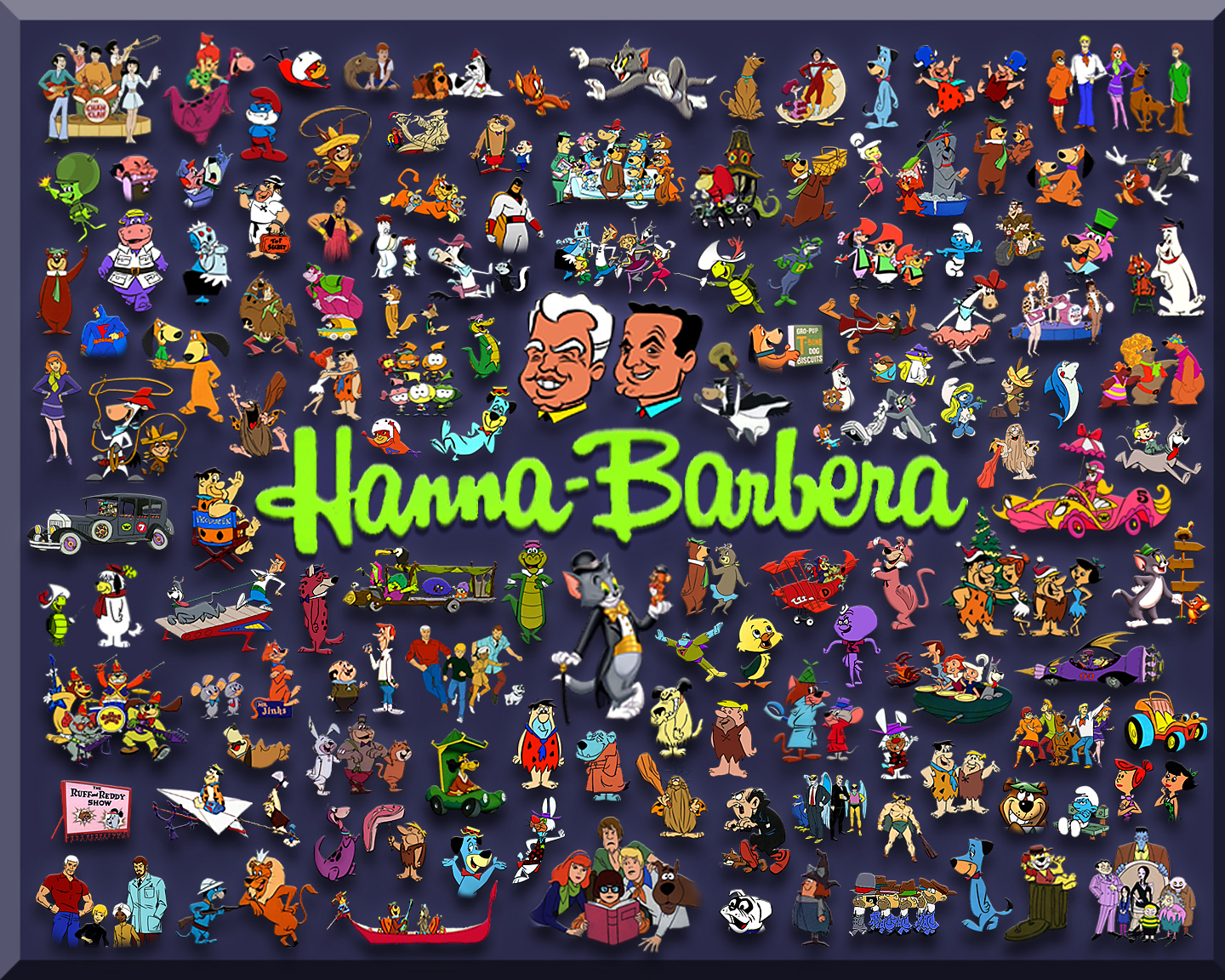
Aunque ha sido criticado por sus limitadas técnicas de animación, Hanna-Barbera produjo exitosas series como Los Picapiedra, Los Supersónicos, Huckleberry Hound, El oso Yogi, Jonny Quest, y Scooby-Doo, los cuales se convirtieron en iconos de la cultura popular estadounidense.
En 1991, la compañía fue comprada por Turner Broadcasting, con el objetivo de usar los cerca de 300 dibujos animados del estudio para su nuevo canal de televisión por cable llamado Cartoon Network.1 2 Rebautizado H-B Production Company en 1993, y Hanna-Barbera Cartoons en 1994, el estudio continuó sin el continuo apoyo de William Hanna o Joseph Barbera, quienes estaban retirados pero aún se mantenían como cabezas del estudio.
A finales de los años 1990, Turner ordenó a Hanna-Barbera crear nuevas series animadas para Cartoon Network. En 1997, Time Warner, los actuales dueños del imperio Hanna-Barbera, cerraron el estudio ubicado en Cahuenga Boulevard en Hollywood y trasladaron a los empleados a Warner Bros. en Burbank. Con la muerte de Hanna en 2001, Hanna-Barbera estuvo absorto en Warner Bros. Animation, y Cartoon Network Studios asumió la producción de las series de Cartoon Network. El nombre Hanna-Barbera es utilizado hoy en día sólo para promocionar series "clásicas", como Los Picapiedra y Scooby-Doo.
Hanna-Barbera Productions, Inc. was an American animation studio. The company was founded in 1957 by the directors of Metro-Goldwyn-Mayer, William Hanna and Joseph Barbera, as HB Enterprises, with which they dedicated to the production of TV commercials. After MGM closed its animation studio in 1957, HB Enterprises became the full-time job Hanna and Barbera. Both began producing cartoons like The Ruff & Reddy Show and The Huckleberry Hound Show. For 1960, now called Hanna-Barbera Productions, the company had become the leading producer of animation.
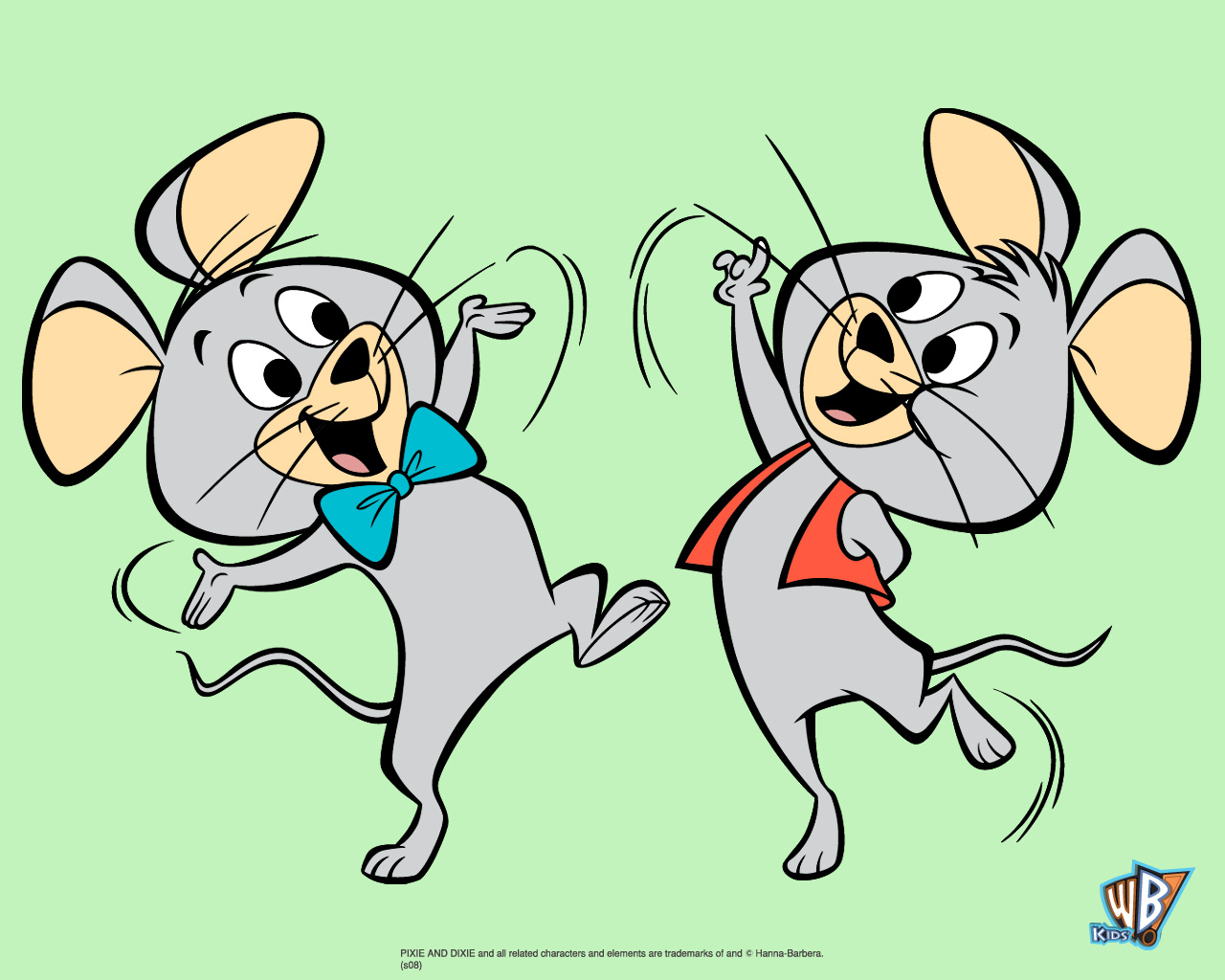
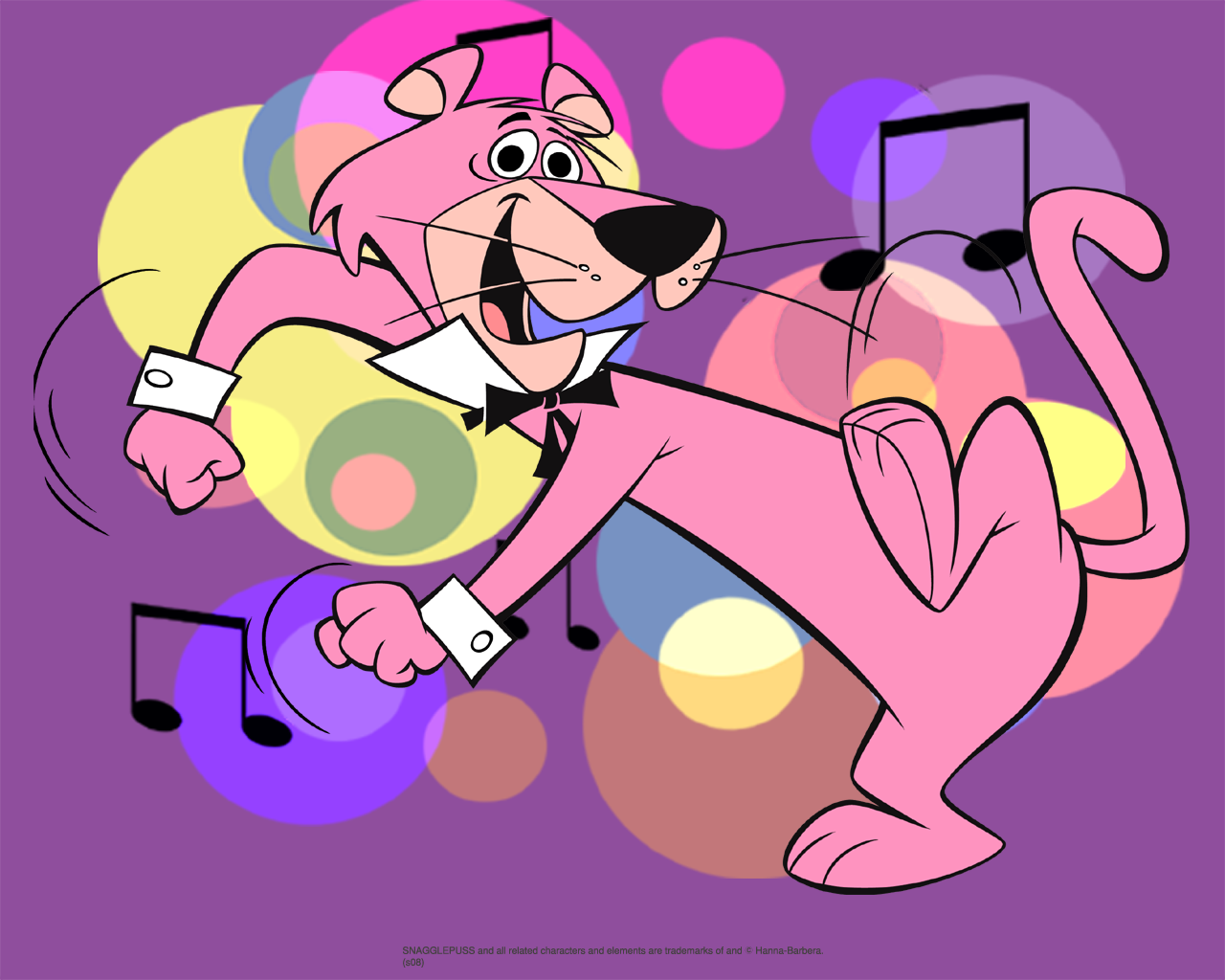
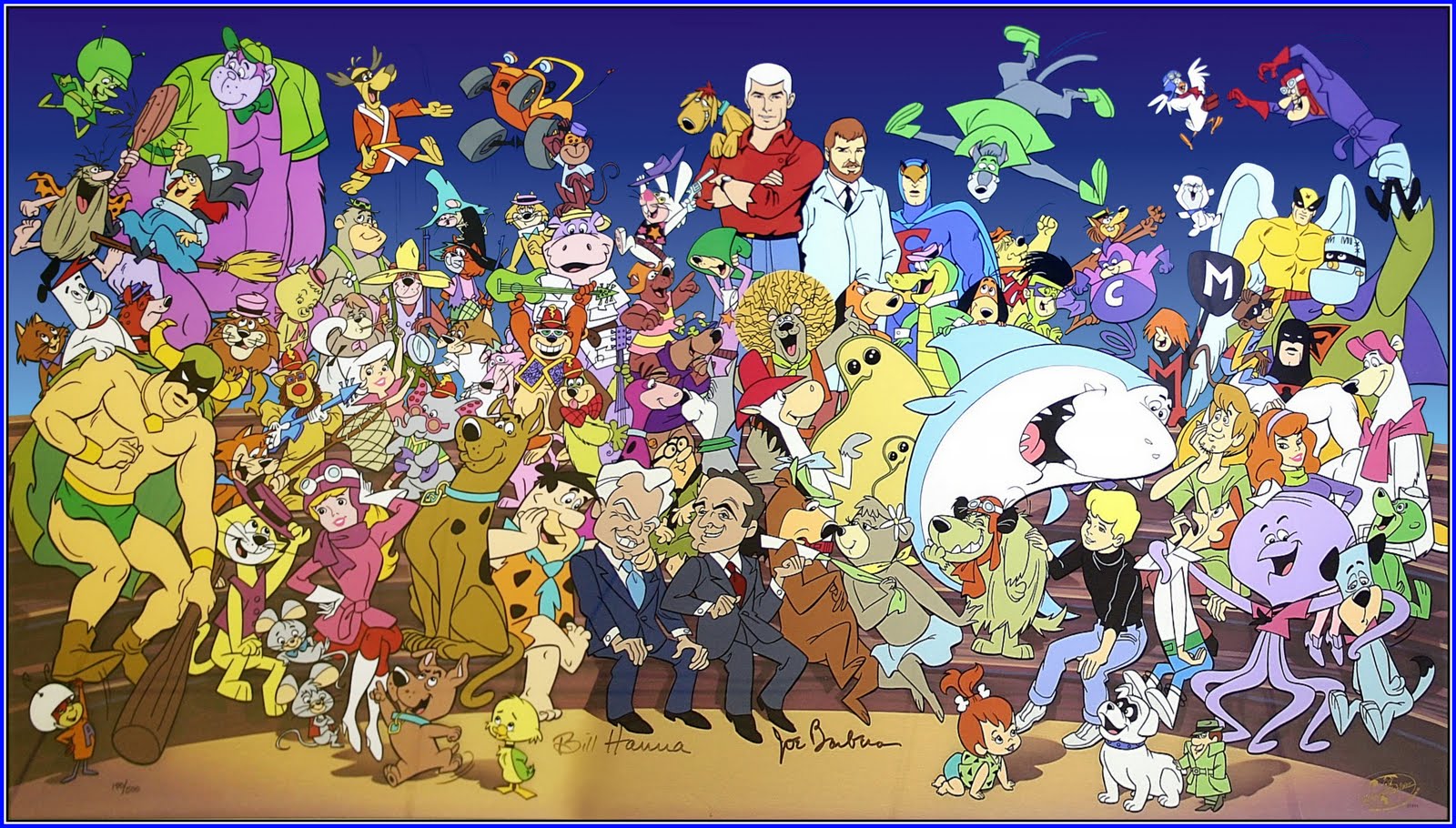
Although it has been criticized for its limited animation techniques, Hanna-Barbera produced hit shows as The Flintstones, The Jetsons, Huckleberry Hound, Yogi Bear, Jonny Quest, and Scooby-Doo, which became icons of American popular culture .
In 1991 the company was bought by Turner Broadcasting, aiming to use the 300 cartoon studio for his new cable channel called Cartoon Network.1 2 Renamed HB Production Company in 1993, and Hanna-Barbera Cartoons in 1994, the study continued without the continued support of William Hanna and Joseph Barbera, who were retired but still remained as head of the study.
In the late 1990s, Turner ordered Hanna-Barbera create new animated series for Cartoon Network. In 1997, Time Warner, the current owners of the empire Hanna-Barbera, closed the studio on Cahuenga Boulevard in Hollywood and moved employees to Warner Bros. in Burbank. With the death of Hanna in 2001, Hanna-Barbera was absorbed into Warner Bros. Animation and Cartoon Network Studios assumed production of Cartoon Network series. Hanna-Barbera name is used today only to promote "classic" series, such as The Flintstones and Scooby-Doo.
Historia
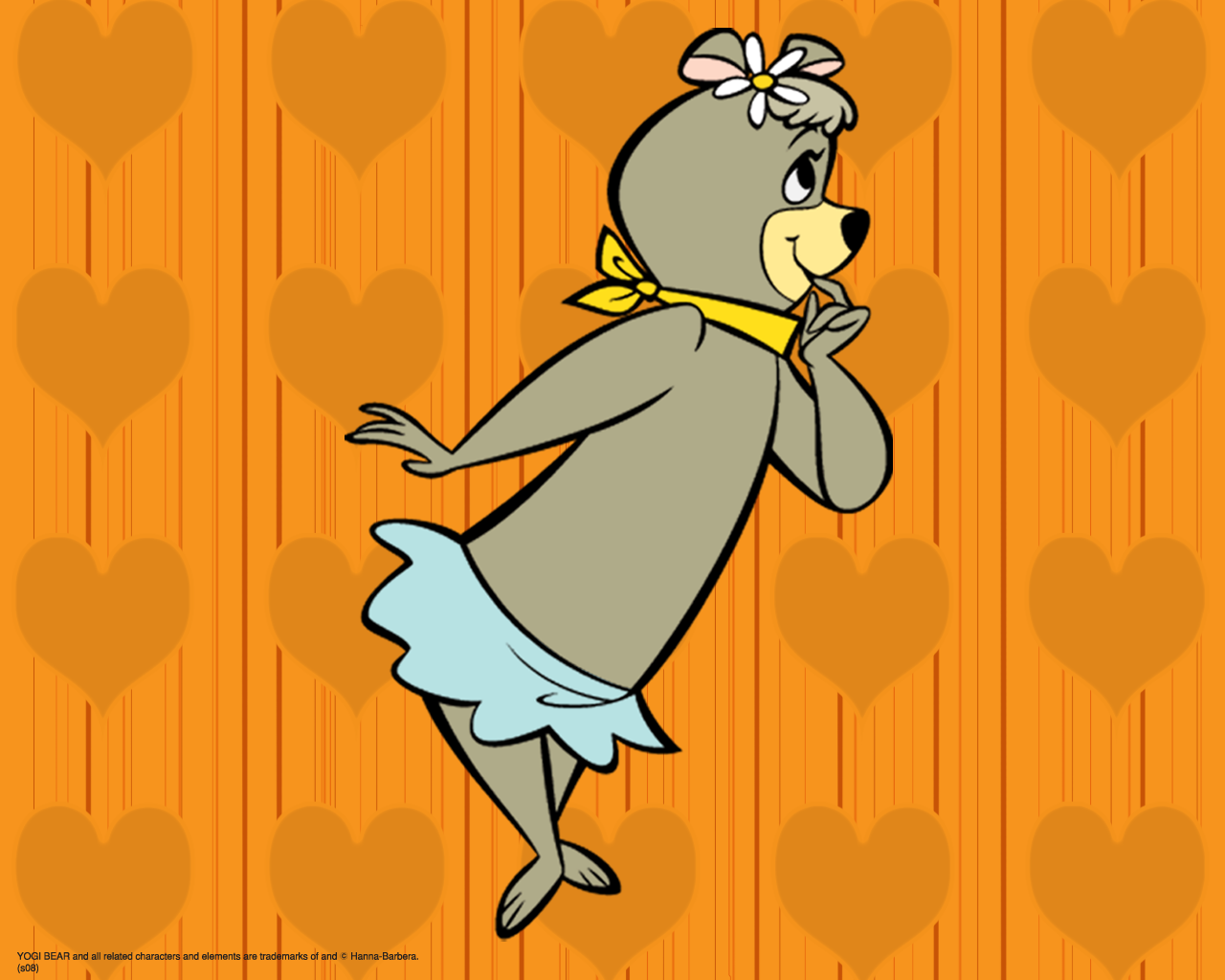
Los comienzos de Hanna-Barbera
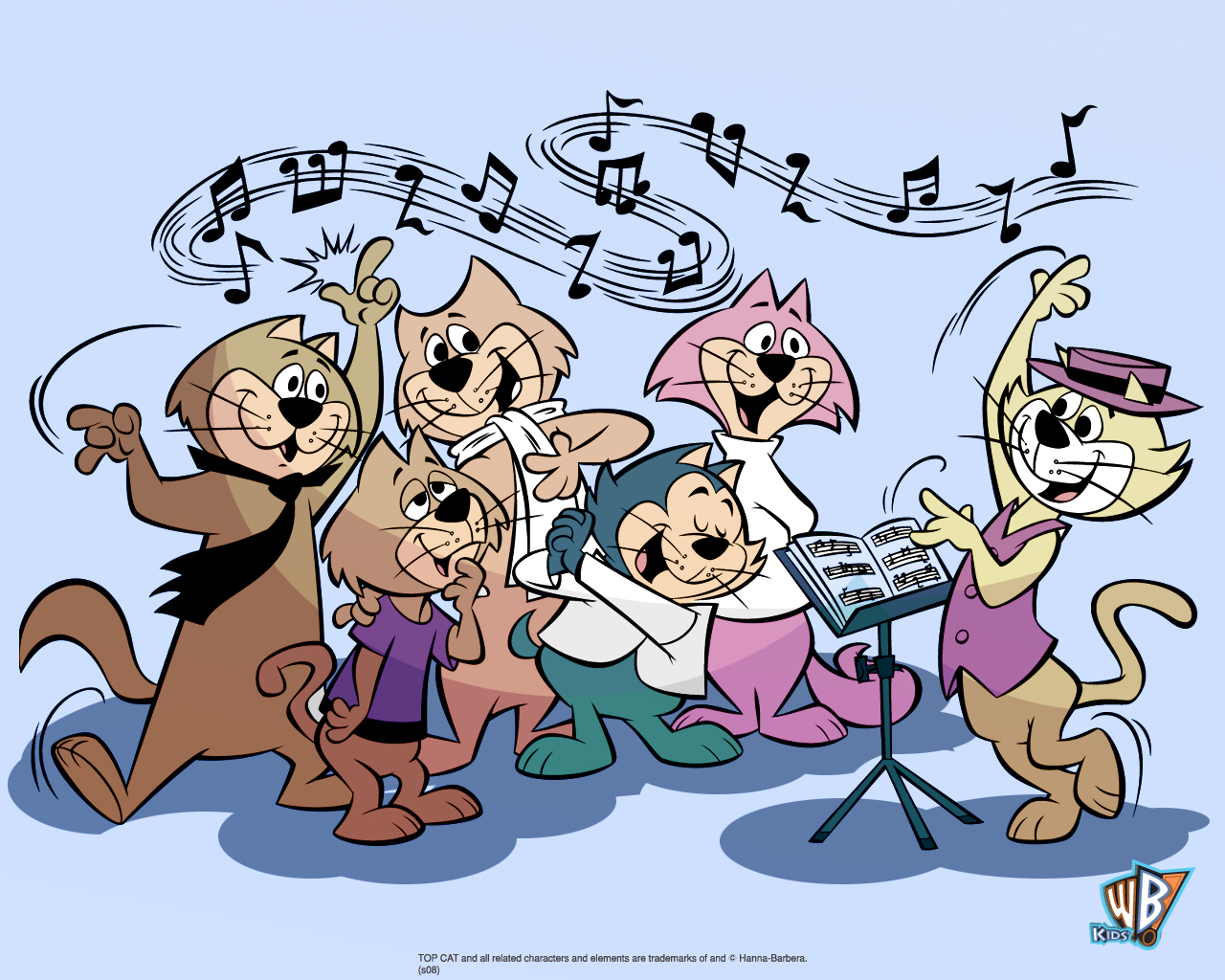
William Hanna y Joseph Barbera trabajaron juntos por primera vez en el estudio de animación de Metro-Goldwyn-Mayer en 1939. Su primer proyecto como directores fue el crear un cortometraje animado titulado Puss Gets the Boot (1940), que sirvió como la primera aparición de los personajes Tom y Jerry.
Hanna, Barbera, y el director de MGM George Sidney formaron H-B Enterprises en 1944 mientras seguían trabajando para el estudio, y usaron la otra compañía para trabajar en proyectos complementarios, incluyendo comerciales de televisión y los créditos originales de I Love Lucy.
Después de una racha de galardones en la que Hanna y Barbera ganaron ocho premios Óscar, MGM cerró su estudio de animación en 1957, cuando sintieron que tenían el número necesario de cortos para reestrenar. Hanna y Barbera contrataron a la mayoría de los empleados de MGM para H-B Enterprises, que se convirtió en una compañía completa en 1957. El estudio decidió especializarse en animación para televisión, y su primera serie fue The Ruff & Reddy Show, que se estrenó en NBC en diciembre de 1957. Para obtener presupuesto y producir sus dibujos animados, Hanna-Barbera hizo un trato con la división televisivaScreen Gems de Columbia Pictures donde recibirían capital a cambio de derechos de distribución.
En 1959, H-B Enterprises fue renombrada Hanna-Barbera Productions, y se convirtió en un líder dentro de la producción de animación para televisión. Aunque ha sido criticado por sus limitadas técnicas de animación, Hanna-Barbera produjo exitosas series que fueron emitidas durante las mañanas de los fines de semana por televisión. El estudio también produjo un par de proyectos para Columbia Pictures, incluyendo Loopy De Loop, una serie de cortometrajes y algunas películas basadas en sus series animadas.
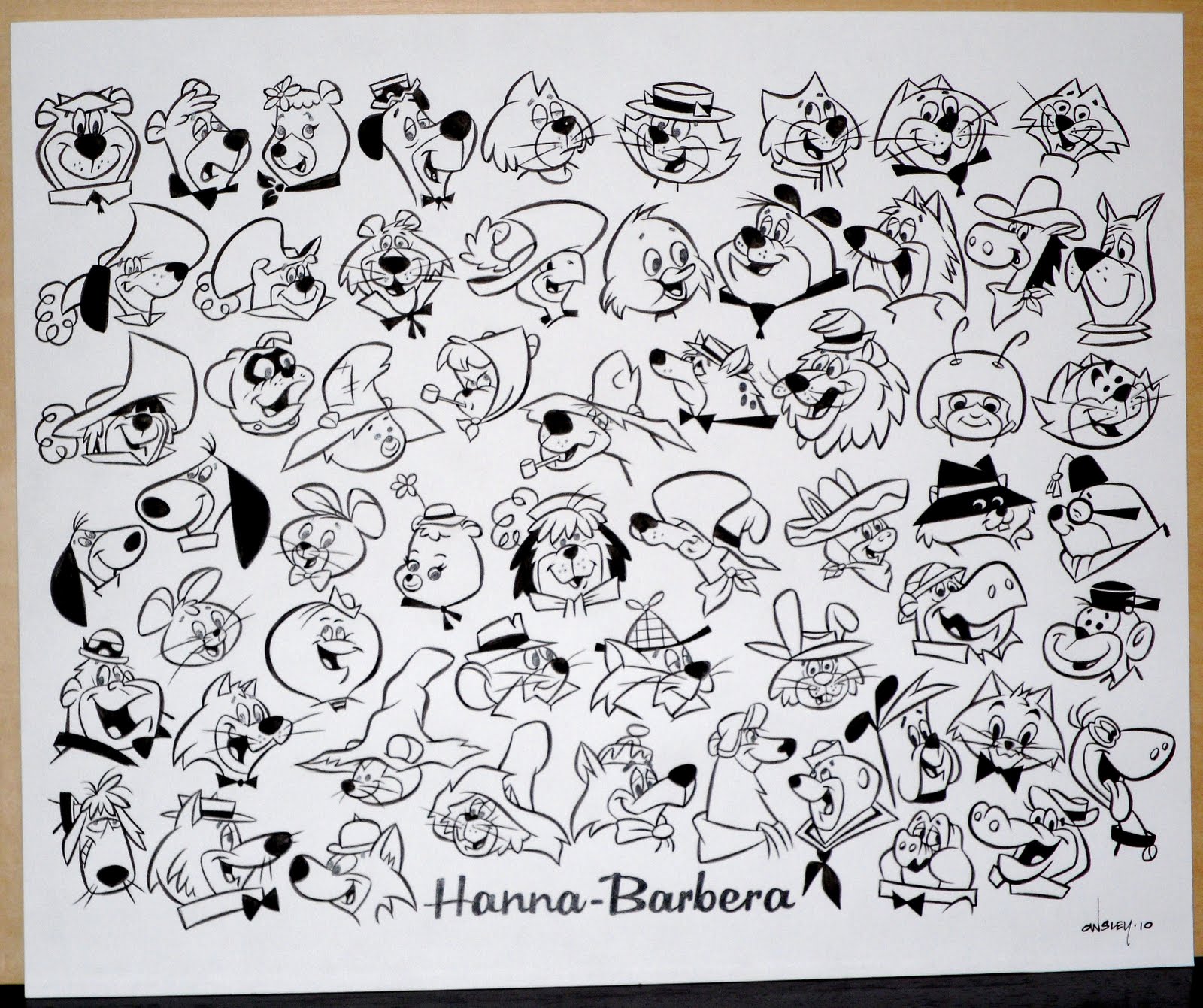
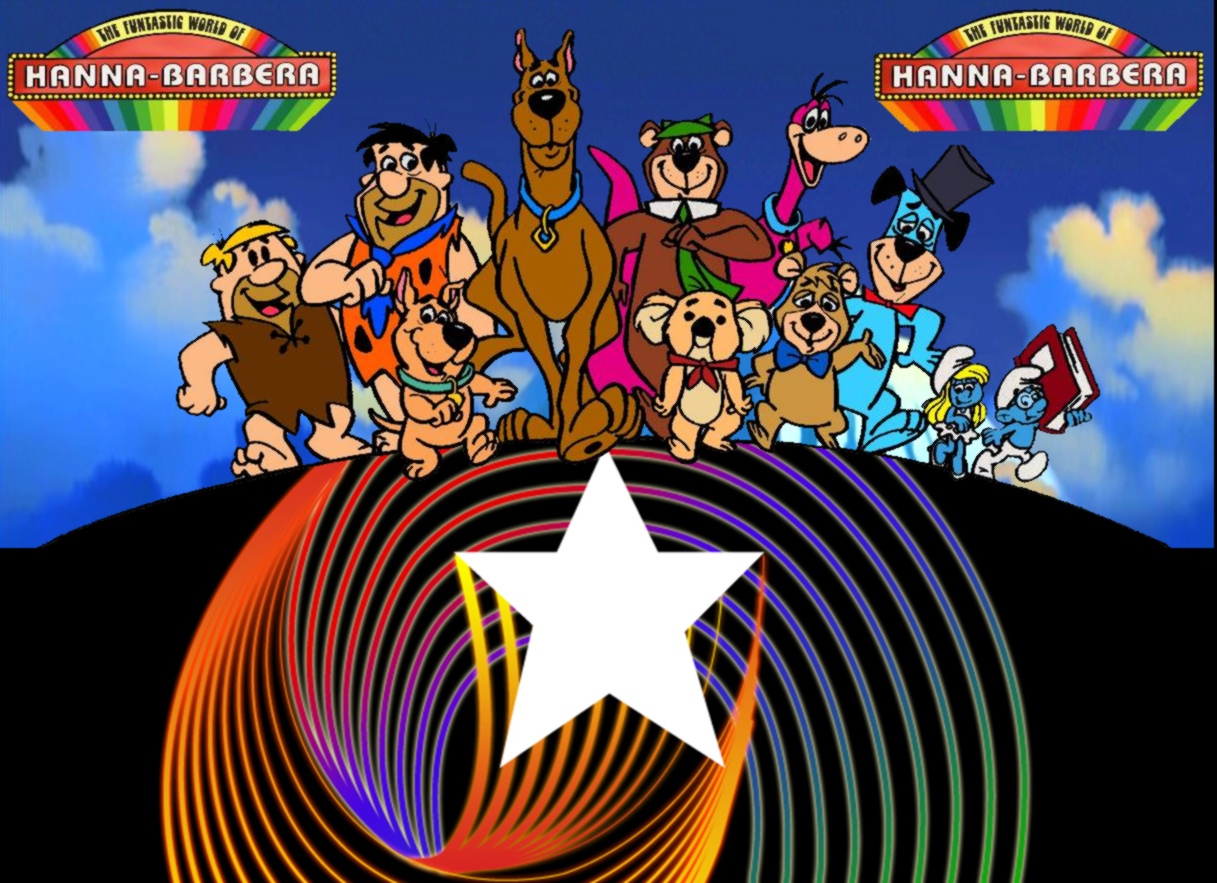
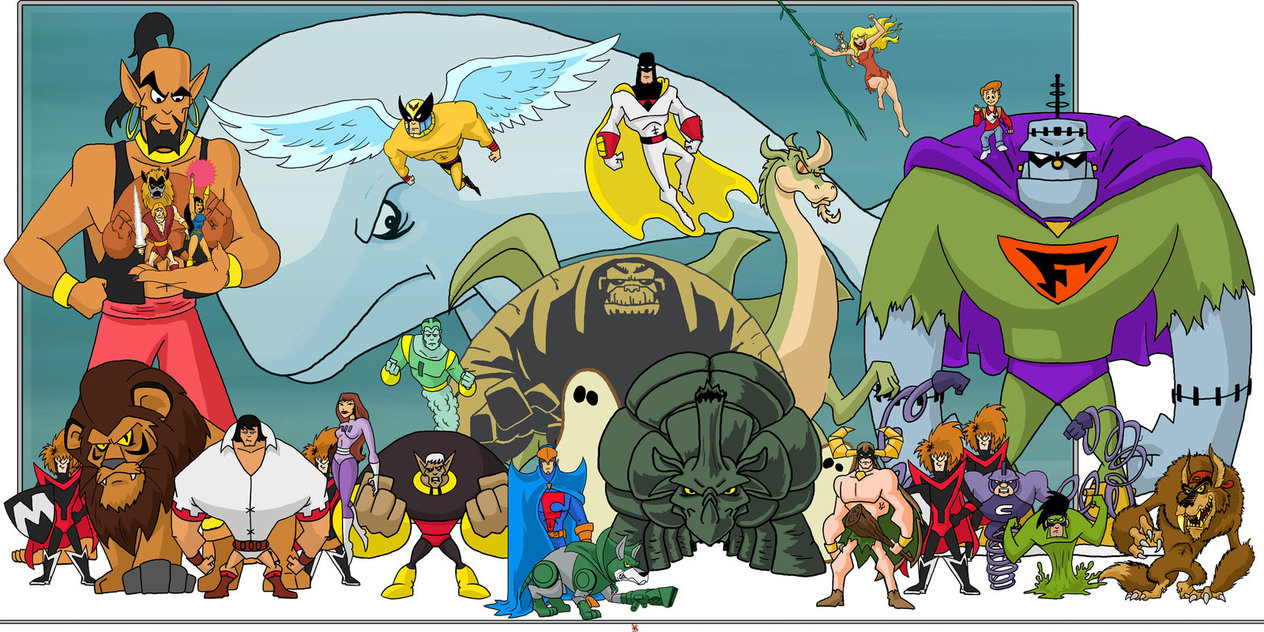
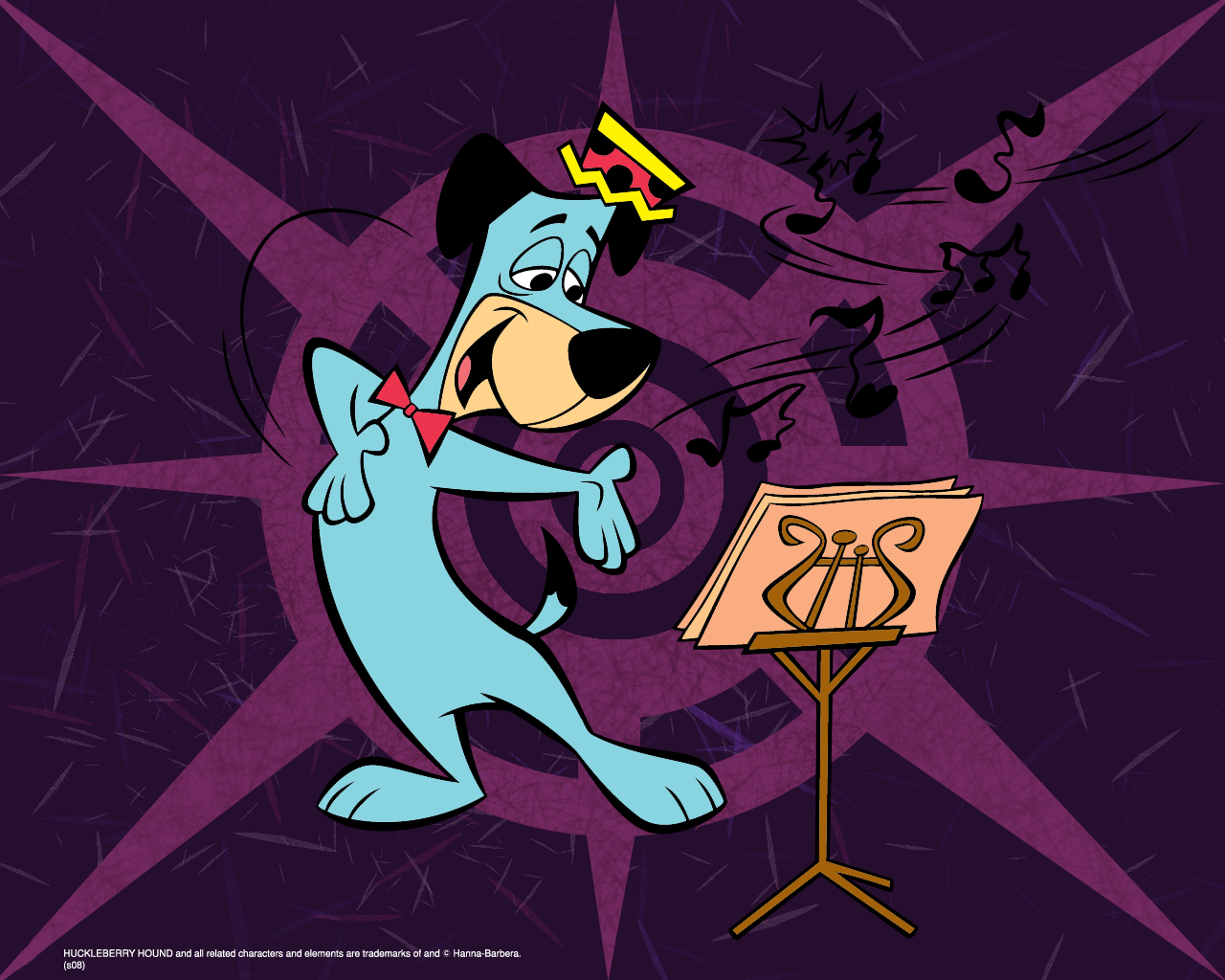
La compañía nunca tuvo un edificio propio hasta 1963, cuando Hanna-Barbera Studios, se mudó a 3400 Cahuenga Blvd. en West Hollywood (California). La unión Columbia/Hanna-Barbera duró hasta 1967, cuando Hanna y Barbera vendieron el estudio a Taft Broadcasting manteniendo sus puestos en éste.
Entre 1969 y 1983 aproximadamente, Hanna-Barbera Productions fue el estudio de animación para televisión más exitoso del mundo, dedicado especialmente a la creación de series para los sábados por la mañana. Los ingresos de la compañía disminuyeron cuando los horarios de la tarde se volvieron más populares en el ámbito de los dibujos animados.
The History
The beginnings of Hanna-Barbera
William Hanna and Joseph Barbera worked together for the first time in the animation studio Metro-Goldwyn-Mayer in 1939. His first directorial project was to create an animated short film entitled Puss Gets the Boot (1940), who served as the first appearance Tom and Jerry the characters.
Hanna, Barbera, and MGM director George Sidney formed HB Enterprises in 1944 while still working for the studio, and used the other company to work on additional projects including television commercials and the original provisions of I Love Lucy.
After a string of awards in which Hanna and Barbera won eight Oscars, MGM closed its animation studio in 1957, when they felt they had the required number of short to retrain. Hanna and Barbera hired the most employees of MGM for HB Enterprises, which became a full company in 1957. The studio decided to specialize in animation for television, and his first series was The Ruff & Reddy Show, which premiered at NBC in December 1957. for budget and produce their cartoons, Hanna-Barbera made a deal with the televisivaScreen Gems division of Columbia Pictures where they would receive capital in exchange for distribution rights.
In 1959, HB Enterprises was renamed Hanna-Barbera Productions, and became a leader in the production of animation for television. Although it has been criticized for its limited animation techniques, Hanna-Barbera produced successful series that were issued during the mornings of the weekend on television. The study also produced a couple of projects for Columbia Pictures, including Loopy De Loop, a series of short films and some films based on his animated series.
The company never had its own building until 1963, when Hanna-Barbera Studios, moved to 3400 Cahuenga Blvd. in West Hollywood (California). The Columbia / Hanna-Barbera union lasted until 1967, when Hanna and Barbera sold the studio to Taft Broadcasting holding their places in it.
Between 1969 and 1983 approximately Hanna-Barbera Productions was studying animation world's most successful television, especially dedicated to creating series for Saturday morning. The company revenues decreased when evening hours are most popular in the field of animation again.
Dibujos animados para televisión
Hanna-Barbera fue el primer estudio de animación en crear exitosamente dibujos animados para televisión; hasta entonces, estos eran sólo retransmisiones de cortos animados del cine. Otro trabajo de Hanna-Barbera incluye los cortometrajes Loopy De Loop para Columbia Pictures entre 1959 y 1965; y los créditos de la serieHechizada de ABC y Screen Gems. Luego, H-B usaría algunos personajes de Hechizada como estrellas invitadas a Los Picapiedra.
Muchas de las series animadas de Hanna-Barbera fueron producidas para las horas de mayor audiencia, y continuaron haciendo esto hasta comienzos de los años 1970. Dibujos animados como The Huckleberry Hound Show (y su spin-off, The Yogi Bear Show), Tiro Loco McGraw, Don Gato, Jonny Quest, Los Supersónicos, y especialmente Los Picapiedra fueron emitidos originalmente en el horario principal, compitiendo con comedias, dramas y programas de concurso.
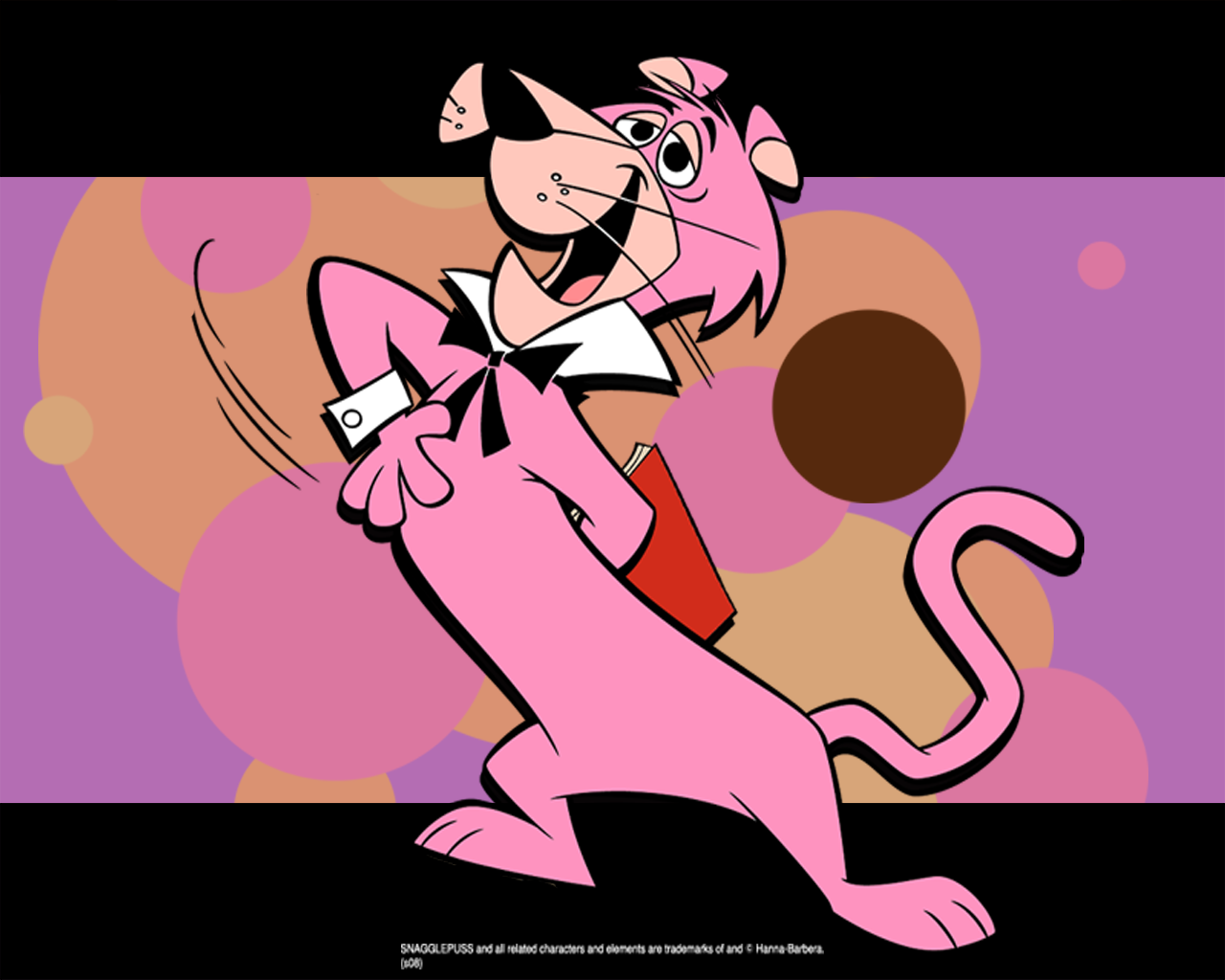
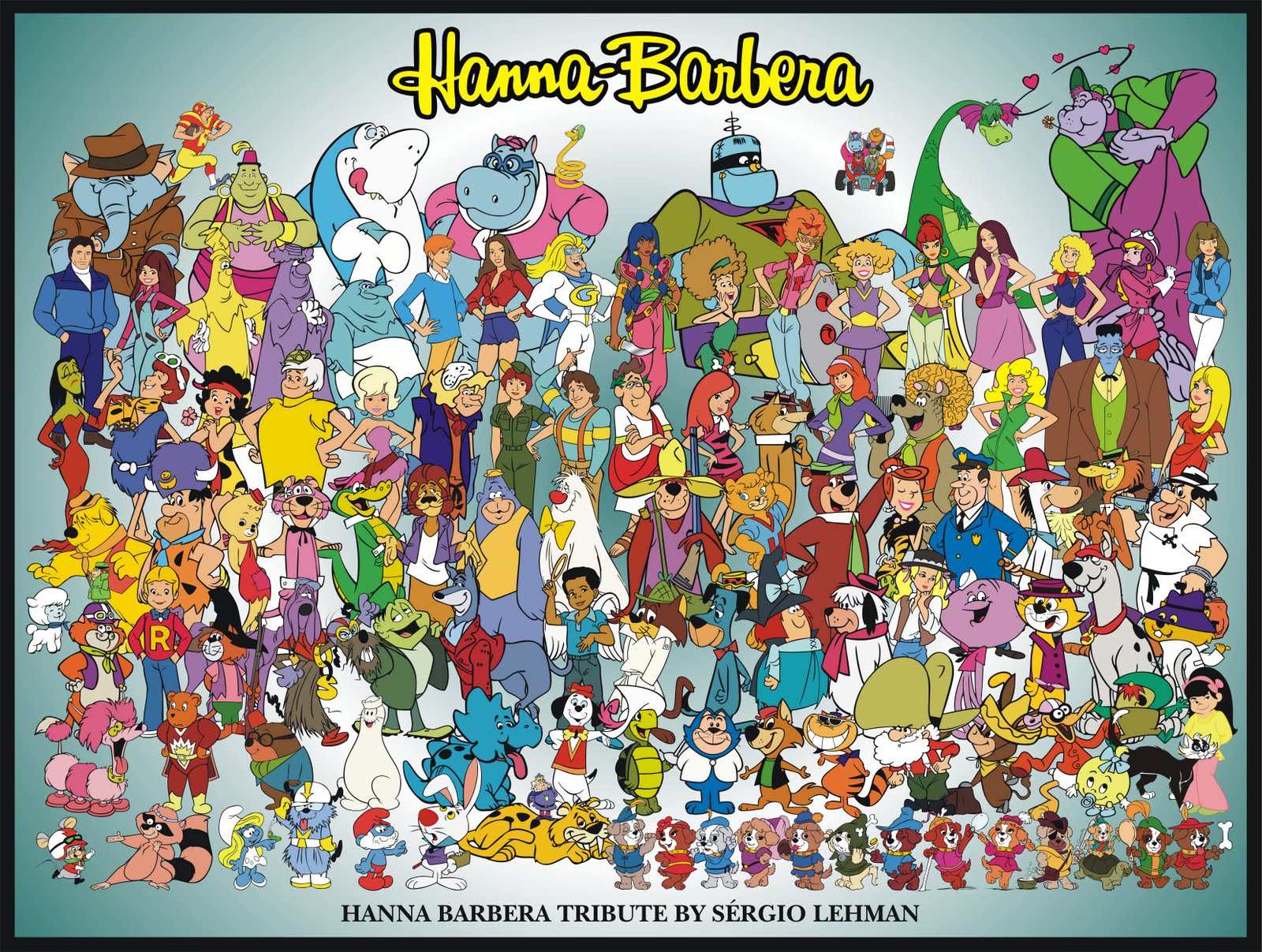
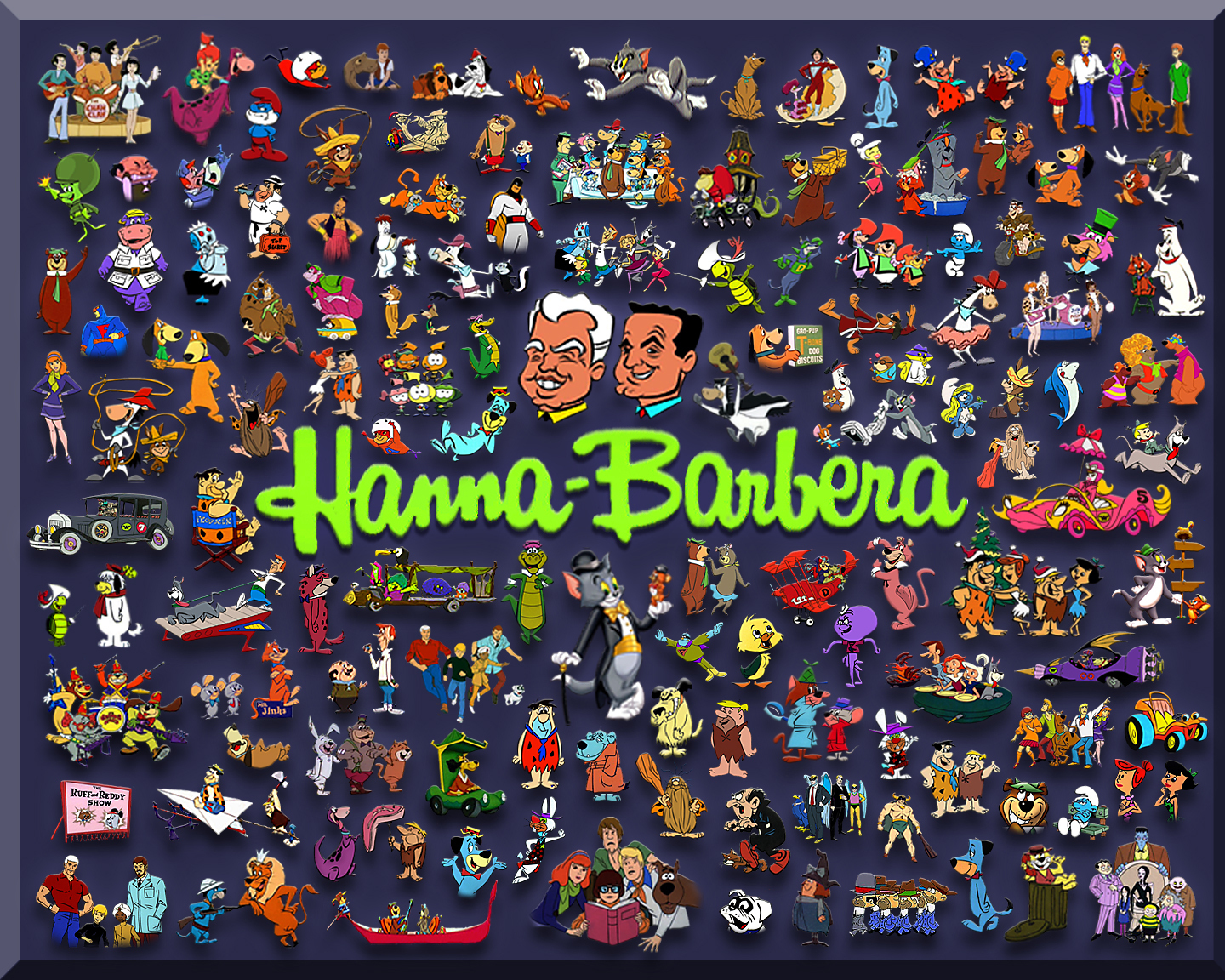
Los Picapiedra se convirtió en un exitoso show. El episodio "The Blessed Event", estrenado el 22 de febrero de 1963, que mostraba el nacimiento de Pebbles, fue el episodio de mayor audiencia en la historia del programa, igualando al episodio de nacimiento de I Love Lucy. Pero el estudio de Hanna-Barbera triunfó en el mercado principalmente por transmitir sus dibujos animados los sábados en la mañana, y su éxito duró aproximadamente treinta años.
Durante los años 1970, la mayoría de los dibujos animados estadounidenses eran producidos por el estudio, teniendo solo como competencia a Filmation y DePatie-Freleng Enterprises, y ocasionalmente especiales animados de Rankin/Bass, Chuck Jones, y Peanuts de Bill Meléndez.
Calidad
El estudio Hanna-Barbera ha sido acusado por contribuir empeorando la calidad de la animación televisiva entre los años 1960 y 1980. Esto es debido a que fue uno de los primeros estudios de animación para televisión y los presupuestos no eran suficientes. El prejuicio a los dibujos animados como un producto solo para niños los hizo impopulares entre los ejecutivos. Por ejemplo, un episodio de 22 minutos (30 con los comerciales) de Josie and the Pussycats en 1970 tenía un presupuesto aproximado de 45.000 dólares, equivalente a un cortometraje de 8 minutos de Tom y Jerry a principios de los años 1940. Estas limitaciones en el presupuesto tuvieron que ser combatidas con nuevas técnicas.
Hanna-Barbera introdujo la animación limitada, popularizada por UPA, en su serie de televisión The Ruff & Reddy Show como un método para reducir el costo de producción. Esto contrajo una reducción en la calidad de la animación. La solución del estudio para enfrentar a las críticas fue crear películas de mayor calidad que las series originales (Hey There, It's Yogi Bear! en 1964, Un hombre llamado Picapiedra en 1966, y (Jetsons: The Movie en 1990) y adaptaciones de otros materiales (Charlotte's Web en 1973 y Heidi's Song en 1982).
La animación alcanzó su punto más bajo a mediados de los años 1970, aun cuando la audiencia de los sábados era buena. La antigua atención por el guion y los diálogos se perdió casi por completo en 1973, debido a que la producción del estudio había crecido hasta tal punto que la calidad de las historias fue dejada de lado. Durante este tiempo, la mayoría de los programas cayó en la repetición de una fórmula que funcionara bien (Los Picapiedra, Scooby-Doo, o los Súper Amigos). Varias técnicas se convirtieron en íconos de Hanna-Barbera, como el fondo que se repetía una y otra vez cuando los personajes caminaban o corrían, y accidentes que ocurrían (la pantalla temblaba) pero no eran mostrados (también conocido como bloopers o errores).
Estas técnicas de animación H-B es un frecuente motivo de burla en animación moderna (especialmente en Fantasma del Espacio de costa a costa y Harvey Birdman, abogado) y en muchos segmentos de "TV Funhouse" (Saturday Night Live) de Robert Smigel.
Animated television cartoon
Hanna-Barbera was the first animation studio to successfully create cartoons for television; until then, these were only broadcasts of short animated film. Another work of Hanna-Barbera includes Loopy De Loop shorts for Columbia Pictures between 1959 and 1965; and credits serieHechizada ABC and Screen Gems. Then, HB would use some characters from Bewitched as stars invited to The Flintstones.
Many of the animated series from Hanna-Barbera were produced for primetime, and continued doing this until early 1970. Cartoons like The Huckleberry Hound Show (and its spin-off, The Yogi Bear Show), Shooting McGraw, Don Gato, Jonny Quest, the Jetsons, and especially the Flintstones were originally broadcast in prime time, competing with comedies, dramas and game shows.
The Flintstones became a successful show. The episode "The Blessed Event", released on February 22, 1963, showing the birth of Pebbles, was the highest-rated episode in the history of the program, matching the episode of I Love Lucy birth. But the study of Hanna-Barbera won in the market mainly to convey his cartoons on Saturday morning, and his success lasted about thirty years.
During the 1970s, most American cartoons were produced by the studio, taking only as competition to Filmation and DePatie-Freleng Enterprises, and occasionally special animated Rankin / Bass, Chuck Jones, and Bill Melendez Peanuts.
quality
The Hanna-Barbera studio has been accused of contributing to worsen the quality of television animation between 1960 and 1980. This is because it was one of the first studies of animation for television and budgets were not enough. Prejudice cartoons as a product made just for kids unpopular among executives. For example, an episode of 22 minutes (30 with commercials) of Josie and the Pussycats in 1970 had a budget of approximately $ 45,000, equivalent to an 8 minute short film Tom and Jerry in early 1940. These limitations in the budget had to be combated with new techniques.
Hanna-Barbera introduced limited animation, popularized by UPA, in his television series The Ruff & Reddy Show as a method to reduce the cost of production. This contracted a reduced quality of animation. The solution of the study to face criticism was to create films of higher quality than the original series (Hey There, It's Yogi Bear 1964, A Man Called Flintstone in 1966, and (Jetsons: The Movie in 1990) and adaptations of other materials (Charlotte's web in 1973 and Heidi's Song in 1982).
The animation reached its lowest point in the mid-1970s, even though the audience on Saturday was good. The former care screenplay and dialogues were almost completely lost in 1973 because the studio production had grown to such an extent that the quality of the stories was shelved. During this time, most of the programs fell in repeating a formula that worked well (The Flintstones, Scooby-Doo, or Super Friends). Several techniques became icons of Hanna-Barbera, as the background that was repeated over and over again when the characters walked or ran, and accidents occurring (the screen shaking) but were not shown (aka bloopers or errors).
These techniques HB animation is a frequent cause of mockery in modern animation (especially on Space Ghost Coast to Coast and Harvey Birdman, lawyer) and in many segments of "TV Funhouse" (Saturday Night Live) by Robert Smigel.
Subida y descenso
El área de la animación cambió durante los años 1980, debido a la nueva competencia que consistía en series animadas basadas en exitosos juguetes y figuras de acción, como en el caso de He-Man y los Amos del Universo de Filmation y Thundercats de Rankin/Bass, Telepictures y Lorimar. El estudio Hanna-Barbera fue dejado de lado a medida que un nuevo estilo de animación se tomaba las pantallas de televisión durante los 80 y 90.
A través de los años 1980, Hanna-Barbera hizo programas familiares como Los Pitufos, Los Snorkels, Pac-Man, Los Dukes de Hazzard, Shirt Tales, Días felices,Laverne y Shirley, Mork y Mindy, y El desafío de los GoBots, además produjo varios especiales de fin de semana para ABC. Algunas de sus series fueron producidas en su estudio ubicado en Australia (debido a un contrato con Southern Star Entertainment), como El grupo increíble, Wildfire, Los osos Berenstain, Teen Wolf, y CBS Storybreak. H-B también se alió con Ruby-Spears Productions, que fue fundado en 1977 por los empleados de H-B Joe Ruby y Ken Spears. Taft Broadcasting, socio de H-B, compró Ruby-Spears de Filmways en 1981, y Ruby-Spears a menudo unió su producción con la de Hanna-Barbera.
H-B tuvo un hábito de hacer versiones infantiles de sus series en los años 1980, como La pantera rosa y sus hijos, Los pequeños Picapiedra, Popeye y su hijo, y Un cachorro llamado Scooby-Doo (Tom & Jerry Kids se produjo a inicios de los noventa). En 1985, Hanna-Barbera lanzó The Funtastic World of Hanna-Barbera, un programa que mostraba nuevas versiones de series como El oso Yogui, Jonny Quest, Los snorkels, y Ricky Ricón junto a nuevos dibujos animados como Galtar y la lanza dorada, Paw Paws, Fantastic Max, y Midnight Patrol. El año siguiente, H-B produjo Yogi's Great Escape, el primer trabajo de su Hanna-Barbera Superstars 10, una serie de 10 películas basadas en sus personajes clásicos, esta serie también incluyó el crossover Los Picapiedra conocen a Los Supersónicos.
Durante este tiempo, Hanna-Barbera y Ruby-Spears estuvieron expuestos a los problemas financieros de su compañía madre Taft Broadcasting, y trasladaron la producción, que antes se hacía solo internamente, a estudios en Taiwán, las Filipinas, Japón y Argentina, donde los estudios Jaime Díaz realizaron algunas animaciones y gran cantidad de layouts para muchas de las series de H-B, como los Pitufos, Scooby-Doo, Los Superamigos, Wildfire, Galtar y la lanza dorada, Paw-Paws, los Snorkels, los Supersónicos, etc. Hanna-Barbera fue acosada por las demandas de algunas cadenas de televisión, principalmente ABC, que insistía en repetir la misma fórmula en Scooby-Doo varias veces; esto reprimía la creatividad, por lo que varios escritores dejaron la compañía en 1989. Respondieron a un llamado de Warner Bros. para resucitar su estudio de animación, con nuevas series como Tiny Toon Adventures y Animaniacs.
Rise and fall
The area of animation changed during the 1980s, due to new competition which consisted of animated series based on successful toys and action figures, as in the case of He-Man and the Masters of the Universe of Filmation and Thundercats of Rankin / Bass, and Lorimar Telepictures. The Hanna-Barbera study was shelved as a new animation style television screens was taken during the 80s and 90s.
Through the 1980s, Hanna-Barbera made familiar programs such as The Smurfs, The Snorkels, Pac-Man, The Dukes of Hazzard, Shirt Tales, Happy Days, Laverne and Shirley, Mork and Mindy, and Challenge of the GoBots, also produced several special weekend for ABC. Some of their series were produced in his studio located in Australia (due to a contract with Southern Star Entertainment) and The Incredible group, Wildfire, Berenstain Bears, Teen Wolf, and CBS Storybreak. HB also allied with Ruby-Spears Productions, which was founded in 1977 by HB employees Joe Ruby and Ken Spears. Taft Broadcasting, HB partner, bought Ruby-Spears of Filmways in 1981, and Ruby-Spears often joined production with Hanna-Barbera.
HB had a habit of making children's versions of their series in the 1980s, such as The Pink Panther and his sons, Small Flintstones, Popeye and his son, and A Pup Named Scooby-Doo (Tom & Jerry Kids occurred earlier nineties). In 1985, Hanna-Barbera launched The Funtastic World of Hanna-Barbera, a program that showed new versions of shows like Yogi Bear, Jonny Quest, The snorkels, and Richie Rich with new cartoons as Galtar and golden spear, Paw Paws, Fantastic Max, and Midnight Patrol. The following year, HB produced Yogi's Great Escape, the first work of its Hanna-Barbera Superstars 10, a series of 10 films based on his classic characters, this series also included the crossover know Flintstones The Jetsons.
During this time, Hanna-Barbera and Ruby-Spears were exposed to the financial problems of its parent company Taft Broadcasting, and moved production, previously made only internally studies in Taiwan, the Philippines, Japan and Argentina, where Jaime Diaz studies performed some animations and lots of layouts for many of the series of HB, as the Smurfs, Scooby-Doo, the Superamigos, Wildfire, Galtar and golden spear, Paw-Paws, the Snorkels, the Jetsons, etc. Hanna-Barbera was harassed by the demands of some TV networks, mainly ABC, who insisted on repeating the same formula in Scooby-Doo several times; this stifled creativity, so several writers left the company in 1989. responded to a call from Warner Bros. to resurrect his animation studio, with new series like Tiny Toon Adventures and Animaniacs.
El regreso
En 1990, el problema empeoró: Taft Broadcasting (que cambió su nombre a Great American Broadcasting en 1987) cayó en bancarrota, y Hanna-Barbera y Ruby-Spears fueron puestos a la venta. En 1992, Hanna-Barbera y gran parte de los trabajos de Ruby-Spears fueron adquiridos por Turner Broadcasting. Aún así, esto hizo que sus primeros personajes, Tom y Jerry, volvieran a ser propiedad de sus creadores, debido a que los derechos de autor de los personajes fueron transferidos al copyright de Hannah-Barbera por la compra.
El presidente de Turner, Scott Sassa, tuvo la inusual idea de liderar el estudio decadente. Fred Seibert era un conocido hombre en la televisión por cable ya que creó los canales MTV y Nickelodeon, y últimamente había hecho Nick-at-Nite, pero nunca había trabajado en la producción de dibujos animados. Inmediatamente llenó el vacío tras la partida de algunos de sus empleados con nuevos animadores, escritores y productores como Pat Ventura, Donovan Cook, Craig McCracken, Genndy Tartakovsky, Seth MacFarlane, David Feiss, Van Partible y Butch Hartman, a la cabeza de ellos estaba Buzz Potamkin. En 1993, el estudio cambió su nombre a H-B Productions Company, al año siguiente lo cambiaría nuevamente a Hanna-Barbera Cartoons, Inc.
A principios de los años 1990, Hanna-Barbera creó series animadas como Tom and Jerry Kids (y su spin-off, Droopy: Master Detective) y The New Adventures of Captain Planet (una secuela de la serie original de DiC/TBS Productions, Capitán Planeta y los planetarios), y también Yo Yogi!. También incluyeron programas que eran diferentes a los antiguos, como Wake, Rattle, and Roll, 2 perros tontos, SWAT Kats, y Piratas de las aguas negras. A mediados de los años 1990, Hanna-Barbera y Cartoon Network (que introdujo una gran variedad de programas de Hanna-Barbera a un nuevo público) lanzaron la innovación de Seibert, World Premiere Toons(también conocido como What A Cartoon), que mostraba nuevos cortometrajes con personajes estables, esta idea cambió para siempre al estudio.
Las primeras series originales de Cartoon Network que emergieron del proyecto World Premiere Toons fue El laboratorio de Dexter creado por Genndy Tartakovsky. Otros programas le siguieron, como Johnny Bravo, Cow & Chicken y The Powerpuff Girls, las últimas en usar el famoso logo de H-B donde aparecía una estrella (utilizado por primera vez en 1979). H-B también produjo nuevas películas protagonizadas por Scooby-Doo (distribuidas por Warner Bros.) y una nueva serie de Jonny Quest, The Real Adventures of Jonny Quest.
Luego de la unión entre Turner Broadcasting y Time Warner en 1996, el conglomerado tenía dos estudios de animación en su posesión. Aunque tenían el mismo dueño, Hanna-Barbera y Warner Bros. Animation operaron de manera distinta hasta 1998. En 1998, el edificio de Hanna-Barbera fue cerrado y el estudio trasladado aSherman Oaks, California.
return
In 1990, the problem got worse: Taft Broadcasting (which changed its name to Great American Broadcasting in 1987) went bankrupt, and Hanna-Barbera and Ruby-Spears were offered for sale. In 1992, Hanna-Barbera and much of the work of Ruby-Spears were acquired by Turner Broadcasting. Still, it made its first characters, Tom and Jerry, return the property of their creators, because the copyright of the characters were transferred to the copyright of Hannah-Barbera for purchase.
The president of Turner, Scott Sassa, had the unusual idea of leading the decadent study. Fred Seibert was a known man in cable television since it created the MTV and Nickelodeon channels, while Nick-at-Nite had, but had never worked in the production of cartoons. He immediately filled the void after the departure of some of its employees with new animators, writers and producers as Pat Ventura, Donovan Cook, Craig McCracken, Genndy Tartakovsky, Seth MacFarlane, David Feiss, Van Partible and Butch Hartman, at the head of them was Buzz Potamkin. In 1993, the studio changed its name to HB Productions Company, the following year would change again Hanna-Barbera Cartoons, Inc.
In the early 1990s, Hanna-Barbera animated created as Tom and Jerry Kids (and its spin-off, Droopy: Master Detective) series and The New Adventures of Captain Planet (a sequel to the original series DiC / TBS Productions, captain Planet and the Planeteers), and Yo Yogi !. Also included programs that were different from the old, like Wake, Rattle, and Roll, 2 Stupid Dogs, SWAT Kats, and The Pirates of Dark Water. In the mid-1990s, Hanna-Barbera and Cartoon Network (which introduced a variety of programs Hanna-Barbera to a new audience) launched the innovation of Seibert, World Premiere Toons (aka What A Cartoon), which showed new shorts with stable characters, this idea changed forever the study.
The first original series from Cartoon Network that emerged from the World Premiere Toons project was Dexter's Laboratory created by Genndy Tartakovsky. Other programs followed, as Johnny Bravo, Cow and Chicken, and The Powerpuff Girls, the last to use the famous logo of HB where it appeared a star (first used in 1979). HB also produced new movies featuring Scooby-Doo (distributed by Warner Bros.) and a new series of Jonny Quest, The Real Adventures of Jonny Quest.
After the union between Turner Broadcasting and Time Warner in 1996, the conglomerate had two animation studios in their possession. Although they had the same owner, Hanna-Barbera and Warner Bros. Animation operated differently to 1998. In 1998, Hanna-Barbera building was closed and moved Asherman study Oaks, California.
Cartoon Network Studios
A partir de 1998, el nombre Hanna-Barbera comenzó a desaparecer de las nuevas series animadas producidas por el estudio, siendo reemplazada por Cartoon Network Studios. En 2001, Hanna-Barbera formó parte de Warner Bros. Animation y los nuevos proyectos fueron manejados por Cartoon Network Studios.
Filmografía
Anexo:Filmografía de Hanna-Barbera
Hanna-Barbera Productions, Inc. es un estudio de animación estadounidense. La compañía fue fundada en 1957 por los directores de Metro-Goldwyn-Mayer,William Hanna y Joseph Barbera. A continuación se listan las series y películas producidas por el estudio.
Cartoon Network Studios
Since 1998, Hanna-Barbera name began to disappear from the new animated series produced by the study, being replaced by Cartoon Network Studios. In 2001, Hanna-Barbera was part of Warner Bros. Animation and new projects were handled by Cartoon Network Studios.
Filmography
Annex: Hanna-Barbera Filmography
Hanna-Barbera Productions, Inc. is an American animation studio. The company was founded in 1957 by the directors of Metro-Goldwyn-Mayer, William Hanna and Joseph Barbera. Then the series and films produced by the study are listed.
Años 50
Año Nombre Otros segmentos Notas
1957
The Ruff & Reddy Show
1958
El Show de Huckleberry Hound
El oso Yogi, Pixie, Dixie y el gato Jinks
1959
El Show de Tiro Loco McGraw
Canuto y Canito, Super Fisgón y Despistado
Loopy De Loop
Años 60
Año Nombre Otros segmentos Notas
1960
Los Picapiedra
1961
El Show del Oso Yogi
Yakky Doodle, El León Melquíades
Don Gato
El lobo Hokey
Reemplazó al oso Yogi en El show de Huckleberry Hound, ya que el Oso Yogi llego a tener su propio show.
1962
Nuevas series animadas de Hanna-Barbera
El Lagarto Juancho, La tortuga D'Artagnan, Leoncio y Triston
Los Supersónicos
1963
El show de Maguila Gorila
Punkin Puss y Mush Mouse, Ricochet Rabbit
1964
Jonny Quest
El show de Pepe Pótamo
Casi Oso y Achú, Viva, Bravo y Hurra
El oso Yogi, "la película"
Película.
1965
La hormiga atómica
El Inspector Ardilla, El pulpo Manotas, Lindo Pulgoso, Los Osos Montañeses, La tonta bruja
Sinbad Jr. y su cinturón mágico
1966
El gordo y el flaco
El hijo de Frankenstein y los imposibles
El fantasma del espacio yDino Boy
Un hombre llamado Picapiedra
Película.
Meteogro y los niñonautas del espacio
1967
Birdman y el trío galaxia
Los Herculoides
Shazzan
Los 4 Fantásticos
Moby Dick y Mighty Mightor
Sansón y Goliat
1968
Los Banana Splits
Los Caballeros Árabes, Los tres mosqueteros, Micro Aventuras, Danger Island
Las aventuras de Gulliver
Las nuevas aventuras de Huckleberry Finn
Combinaba animación con live action
Los autos locos
1969
Los peligros de Penélope Glamour
El escuadrón diabólico
Bromas Aladas, Patán el Magnifico
Los gatedráticos del ritmo
La vuelta al mundo en 79 días, ¡Es el lobo!, El Motorratón y el Autogato
¿Scooby-Doo dónde estás?
Años 70
Año Nombre Otros segmentos Notas
1970
The Harlem Globetrotters
Josie and the Pussycats
Where's Huddles?
1971
El show de Pebbles y Bamm-Bamm
Los osos revoltosos
El fantasma revoltoso
1972
El arca loca de Yogi
Película
El Clan Chan
Los problemas de papá
Roma me da risa
Laboratorio Submarino 2020
Las nuevas películas de Scooby-Doo
1973
El superveloz Buggy Buggy
Butch Cassidy and the Sundance Kids
El clan de Yogi
Los superamigos
Gobber y los Cazafantasmas
Pulgarcito, investigador privado
Jeannie
Producida junto a Screen Gems. Spin-off de la serie Mi bella genio
The Addams Family
Primera versión animada de la serieThe Addams Family
1974
Hong Kong Phooey
Ases del peligro
La familia Partridge en el año 2200
Producida junto a Columbia Pictures Television. Spin-off de la serie The Partridge Family
Los días felices
El valle de los dinosaurios
Astuto Wheelie
Korg: 70,000 B.C.
Live action
1975
The New Tom & Jerry/Grape Ape/Mumbly Show El show de Tom y Jerry, El show de Simiolón, The Mumbly Cartoon Show
1976
El show de Scooby-Doo/Dynomutt, Dog Wonder
El show de Scooby-Doo, Dynomutt, Dog Wonder (conocidos como "Fabul Man y Dinamita, el Perro Maravilla" en el doblaje de la serie original, y "Halcón Azul y Dinamo" en su posterior aparición en Las olimpiadas de la risa)
Clue Club
Mandibulín
1977
Picapiedra y Compañía
Scooby's All-Star Laff-A-Lympics Las olimpiadas de la risa, El capitán Cavernícola y los ángeles adolescentes
Los osos mañosos
El comisario Tiro Súbito y su Pelotón Invencible, Buitre Salitre y Piernas Locas, Elefagente Secreto, Gusto, Susto y Disgusto, Heyy, es el rey!
The Skatebirds
Woofer & Wimper, Dog Detectives, Los tres robots chiflados, Ruedas mágicas, Mystery Island
El reto de los Superamigos
Los gemelos fantásticos
1978
La hora feliz de Hanna-Barbera
Live action
El nuevo show de Popeye
El perro Dinky
La carrera espacial de Yogi
Galaxy Goof-Ups, Buford y Fantasma a galope
Godzilla
Jana de la selva
1979
El show de Scooby-Doo y Scrappy-Doo
Los policías de Piedradura
Gasparín y los ángeles
The New Shmoo
Super Globetrotters
Pedro y Pablo conocen a la Mole
La mole, The New Fred and Barney Show
Fred and Barney Meet the Shmoo
Años 80
Año Nombre Otros segmentos Notas
1980
The Flintstone Comedy Show
The Fonz and the Happy Days Gang
Producida junto a Paramount Television
El show de Riky Ricón/Scooby-Doo El show de Scooby-Doo y Scrappy-Doo, Riky Ricón
1981
Cantinflas y sus amigos
Laverne y Shirley en el ejército
Producida junto a Paramount Television
Space Stars
Fuerza adolescente, Astro y los perros espaciales, El fantasma del espacio, Los Herculoides
Kwicky el Koala
The Bungle Brothers, Crazy Claws, Dirty Dawg
Los Pitufos
Juan y Guillermo
El show de Tom y Jerry
Producida junto a MGM Television
1982
Las travesuras de Los Picapiedra
Los Picapiedra, Los policías de Piedradura, Dino y el Ratón Cavernícola,Pebbles, Dino y Bamm-Bamm, El Capitán Cavernícola, Los Frankepiedra
Mork y Mindy: la serie animada
Producida junto a Ruby-Spears y Paramount Television
El show de Mork y Mindy/Laverne y Shirley/Fonz Fonz and the Happy Days Gang, Mork y Mindy: la serie animada
Producida junto a Ruby-Spears y Paramount Television
El show de Pac-Man/Little Rascals/Riky Ricón Pac-Man, The Little Rascals, Riky Ricón
Jokebook
Shirt Tales
El show de Gary Coleman
1983
Los Dukes Producida junto a Warner Brothers TV. Spin-off de la serie Los dukes de Hazzard
Monchhichis
El nuevo show de Scooby y Scrappy-Doo
The Biskitts
1984
Los Snorkels
Los hijos de la pantera rosa
Producida junto a DePatie-Freleng Enterprises
El desafío de los GoBots
1985
Los osos Paw Paw
Yogi y la búsqueda del tesoro
The Super Powers Team: Galactic Guardians
Los 13 fantasmas de Scooby-Doo
Los osos Berenstain
La más grandiosa de las aventuras: pasajes de la Biblia
Serie Animada con historias de la biblia, sacada directamente en formato VHS
1986
Pound Puppies
Los Pequeños Picapiedra
Capitán Cavernícola e hijo
Wildfire
1987
Popeye y su hijo
Seabert
1988
Un cachorro llamado Scooby-Doo
Las completas desventuras mentales de Ed Grimley
El nuevo show del oso Yogi
Fantastic Max
1989
Hägar the Horrible: Hägar Knows Best
Producida junto a King Features Syndicate
Dink, el pequeño dinosaurio
Producida junto a Ruby-Spears Productions
Años 90
Año Nombre Otros segmentos Notas
1990
Las aventuras de Don Coyote y Sancho Panda
Las excelentes aventuras de Bill y Ted
Cuentos inolvidables
Los pequeños Tom y Jerry
Spike y Tyke, Droopy y Drippe
Wake, Rattle, and Roll
Rick Moranis in Gravedale High
1991
Patrulla Media Noche: aventuras en la zona de los sueños
El joven Robin Hood
Producida junto a Cookie Jar Entertainment
Piratas de las aguas negras
Yo Yogi!
1992
Fish Police
Los locos Addams
1993
SWAT Kats - The Radical esquadron
2 perros tontos
Super Secreto Inspector Ardilla
La pantera rosa
El Capitán Planeta
Las futuras aventuras de SuperTed
1995
¡Qué historia tan maravillosa!
Coproducido junto a Cartoon Network Studios
Dumb & Dumber
1996
El laboratorio de Dexter
Los amigos de la Justicia, Marca M Para Mono. Producida junto a Cartoon Network Studios.
Las aventuras de Jonny Quest
Caverniños
1997
Johnny Bravo
Producido junto a Cartoon Network Studios.
Cow & Chicken
Soy la Comadreja
Coproducida junto a Cartoon Network Studios.
1998
Las Chicas Superpoderosas
Coproducida junto a Cartoon Network Studios.
¿SABIAN QUE HACE MAS DE 20 AÑOS ATRAS SE DIO UN PROYECTO EN PERU PARA FORMAR UN EQUIPO DE PRODUCCION DE DIBUJOS ANIMADOS PARA LA HANNA BARBERA CON DIBUJANTES PERUANOS?
DID YOU KNOW THAT MORE THAN 20 YEARS AGO WAS GIVEN A PROJECT IN PERU TO FORM A TEAM OF PRODUCTION OF CARTOONS FOR HANNA BARBERA CARTOONISTS WITH PERUVIAN?
¿SABEN PORQUE FRACASO ESTE PROYECTO?
POR CULPA DEL ENTONCES DESCONOCIDO PERO MORTIFERO, TRAICIONERO E HIPOCRITA CARLOS CRISOSTOMO PALOMINO?
YOU KNOW FAILURE BECAUSE THIS PROJECT?
THEN BECAUSE OF UNKNOWN BUT DEADLY, TREACHEROUS CARLOS E HIPOCRITA CRISOSTOMO PALOMINO?
EL ERA UNO DE LOS DIBUJANTES QUE SE PRESENTO A ESTE PROYECTO Y CUANDO CONOCIO A UN GRUPO DE BUENOS ARTISTAS PERUANOS ; COMENZO A SEMBRAR LA DISCORDIA DICIENDO QUE ESTE PROYECTO NO IBA A FUNCIONAR LO CUAL TRAJO COMO ES DE SUPONER EL QUE MUCHOS SE RETIRASEN Y OTROS COMENZARAN A CUESTIONAR E INCLUSO A EXIGIR DINERO POR ADELANTADO POR EL TIEMPO QUE ESTABAN INVIRTIENDO.
THIS WAS ONE OF THE DRAFTSMEN TO PRESENT A PROJECT AND WHEN MET A GROUP OF GOODS PERUVIAN ARTISTS; DISCORD BEGAN TO PLANT PROJECT SAYING THAT WOULD NOT WORK WHICH BROUGHT AS IS EXPECTED THAT MANY OTHER RETIRE, AND EVEN BEGIN TO CHALLENGE A DEMANDING MONEY IN ADVANCE BY THE TIME YOU WERE INVESTING
LOS SABADOS NOS REUNIAMOS EN UN LOCAL DE MIRAFLORES, UNA AGENCIA DE PUBLICIDAD Y SE NOS CAPACITABA PARA ENVIAR UN PILOTO DE MUESTRA DE LA NUEVA SERIE DE LOS BEBES PICAPIEDRA.
WE MET SATURDAY IN A LOCAL OF MIRAFLORES, AN AGENCY OF ADVERTISING AND WE ENABLED THEM TO EMAIL SIGN PILOT NEW SERIES OF BABIES PICAPIEDRA.
PERO ESTE CODICIOSO COMENZO A HABLAR DE CREAR ENTRE NOSOTROS UNA GRAN EDITORA ARTISTICA , PRINCIPALMENTE DE COMICS Y CON ESTE SUJETO CARLOS CRISOSTOMO PALOMINO COMO NUESTRO LIDER INDISCUTIBLE LOGRARIAMOS TRIUNFO Y RIQUEZAS.
BUT THIS GREEDY BEGAN TO SPEAK TO CREATE A GREAT EDITOR AMONG US ARTISTICA MAINLY OF COMICS AND THIS SUBJECT CARLOS CRISOSTOMO PALOMINO UNDISPUTED LEADER AS OUR SUCCESS AND RICHES WOULD ACHIEVE.
SOLO CONSIGUIO QUE EL EQUIPO DE TRABAJO DE SEPARASE Y DE ESA MANERA EL TRABAJO NO SE PUDO COMPLETAR ADECUADAMENTE A TIEMPO Y EL PROYECTO FRACASO.
JUST GOT THE TASK FORCE AND THAT WAY SEPARATED WORK PROPERLY NOT COMPLETE THE PROJECT TIME AND FAILURE.
LA UNION HACE LA FUERZA NO LA DISCORDIA Y LA TRAICION ACOMPAÑADOS DE LA MENTIRA, LA HIPOCRESIA Y LA TRAICION CUALIDADES DEL SEÑOR CARLOS CRISOSTOMO PALOMINO.
THE UNION IS STRENGTH NO DISCORD BETRAYAL AND ACCOMPANIED BY THE LIE, THE HYPOCRISY AND BETRAYAL QUALITIES OF THE LORD CARLOS CRISOSTOMO PALOMINO.
DE HABER RESULTADO ESTE PROYECTO EL PERU SERIA UNA GRAN POTENCIA EN LA PRODUCCION DE DIBUJOS ANIMADOS Y DARIAMOS SERVICIOS A LAS MEJORES COMPAÑIAS INTERNACIONALES Y POR SUPUESTO A LA FABULOSA WALT DISNEY
RESULT HAVE THIS PROJECT WOULD PERU GREAT POWER PRODUCTION OF CARTOON AND SERVICES WE WOULD BEST INTERNATIONAL COMPANIES AND OF COURSE THE FABULOUS WALT DISNEY.
LO MALO QUE ESTA FABULOSA OPORTUNIDAD SE PERDIO PARA SIEMPRE…¿Y ACASO LOS ADMIRADORES DE CARLOS CRISOSTOMO PALOMINO DICEN UNA PALABRA DE ESTE GRAN DAÑO QUE COMETIO AÑOS ATRAS?
THE BAD THIS FABULOUS OPPORTUNITY LOST FOREVER ... AND PERHAPS THE FANS SAY PALOMINO CRISOSTOMO CARLOS A WORD OF DAMAGES COMMITTED THIS GREAT YEARS AGO?
¿ACASO EL COMERCIO, PERU 21 , LOS CHICOS DEL KINGDOM COMICS, LA SOCIEDAD DE HISTORIETISTAS PERUANOS ETC. ALGUIEN DICE UN COMENTARIO SOBRE ESTE TERRIBLE INCIDENTE?
DID TRADE, PERU 21 KINGDOM THE BOYS COMICS, CARTOONISTS PERUVIAN SOCIETY ETC. SOMEONE TELL A COMMENT ON THIS TERRIBLE INCIDENT?
LO QUE PASO YA PASO , SOBRE TODO SI EL CULPABLE FUE CARLOS CRISOTOMO PALOMINO, CUANTOS ARTISTAS TENDRIAN TRABAJO Y CUANTOS DE NOSOTROS INCLUSIVE YA NOS HABRIAMOS IDO A TRABAJAR EN EL EXTRANJERO.
WHAT HAPPENED AND STEP, ESPECIALLY IF THE GUILTY WAS CARLOS CRISOTOMO PALOMINO, WOULD HAVE MANY ARTISTS AND HOW WE WORK AND INCLUSIVE WE WOULD HAVE GONE TO WORK ABROAD.
POR ESO NUESTRO PAIS NO PROGRESA PORQUE ESTA LLENO DE GENTE NEGATIVA QUE SOLO EXISTE PARA HACER DAÑO Y DESTRUIR TODO LO BUENO QUE EXISTE ALREDEDOR, SOLO LA MALDAD VIVE EN SU ALMA VENENOSA.
WHY OUR COUNTRY BECAUSE NO PROGRESA IS FULL OF NEGATIVE PEOPLE THAT ONLY THERE FOR HARM AND DESTROY ALL AROUND THERE GOOD, EVIL JUST LIVE IN YOUR SOUL POISON.



